Beverly Gray's Blog: Beverly in Movieland, page 52
October 27, 2020
Fosse/Verdon: Giving ‘em the Old Razzle-Dazzle
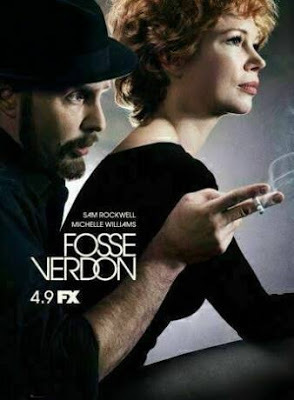
It’s no secret that I love musical theatre, whether on stage or on the screen. Thanks to the pandemic, I haven’t attended a stage musical since early in the year, and some of the award-winning productions to which I was enthusiastically looking forward are now, I guess you could say, gone with the wind. This past summer, the skillfully-made video version of Hamilton helped remind me how much I love literate stories that are fueled by song and dance. Basically, though, I’m reduced to watching old movies from my childhood in order to feed my theatregoing habit.
But of course there’ve been some dividends from my recent hours of TV-watching. For one thing, I got to catch up with a mini-series that had always intrigued me. Fosse/Verdon first aired in eight parts on FX, beginning in the spring of 2019, back when the world was considerably saner than it is now. It’s a close-up look at two giants of stage and screen: director/choreographer Bob Fosse and his everloving wife, Gwen Verdon. I had read about the personal lives of these two—their turbulent marriage, Fosse’s chronic philandering along with his dependence on drink and drugs, Verdon’s struggles to assert her independence of her spouse—in Sam Wasson’s excellent Fosse biography, published in 2013. But a book can’t convey the impact of Fosse’s landmark choreography, nor Verdon’s incandescent stage presence.
Thanks to the well-staged mini-series I got to relive some of the pair’s theatrical highlights. These include Fosse creating Verdon’s sexy solos as the temptress Lola in Damn Yankees; Verdon communicating to the Sweet Charity taxi-dancers Fosse’s radical vision of the “Big Spender” number; Verdon flying to Berlin on short notice to help Fosse launch his screen directing career with Cabaret (and discovering upon arrival that he’s sleeping with someone else). One of my favorite moments shows how Verdon’s softer approach succeeds in conveying to performers the staging ideas that Fosse’s truculent manner can’t communicate. As she modestly explains it, “I just know how to speak Bob. It's my native tongue.”
The acting is strong. I admired the highly malleable Sam Rockwell (credible here as the slim, graceful, and hugely troubled Fosse) and particularly Michelle Williams, who had me almost convinced she was the incarnation of the distinctive-looking and -sounding Verdon. The restaging of famous numbers was done with care and love. Only problem: the series tries too hard to emulate the funky surrealism of Fosse’s own semi-autobiographical film, All That Jazz. And, frankly, it’s easy to be weary of the usual showbiz tropes: the guy who craves fame but carelessly squanders his talent, the co-dependent wife, even the adored daughter – growing up too fast --who barely survives her parents’ legacy. (Nicole Fosse, now clean and sober, was a series producer.) My favorite episode is one that focuses, for a change, on Verdon’s own life challenges. It cleverly uses “Razzle Dazzle,” a song from her musical hit Chicago, to show her knowingly charming the head of an adoption agency when a natural-born baby doesn’t seem like a possibility.
The timeline in the mini-series is creatively scrambled, so that we aren’t trapped by the occasional tedium of strict chronology. The cast is chock-full of near-lookalikes playing Fosse friends and protégées, including Neil Simon, Paddy Chayefsky, and Liza Minnelli in full Cabaret mode. Special kudos to Margaret Qualley (daughter of Andie MacDowell) whose career has taken a big leap forward recently, between her sympathetic performance as Fosse’s main squeeze, Ann Reinking and her role as a Manson groupie in Tarantino’s Once Upon a Time in Hollywood. About her there’s more to come.
October 23, 2020
Foul Ball?: Baseball at the Movies
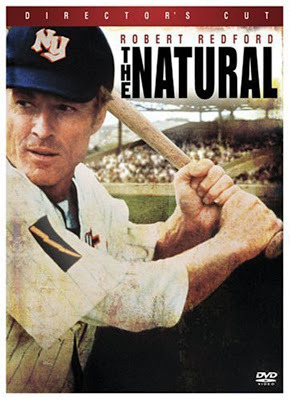
As I write this, my Los Angeles Dodgers and the Tampa Bay Rays are tied after the second game of a COVID-era World Series. Both their championship games so far have been heaven for baseball fans, featuring home runs galore, as well as circus catches, stolen bases, and heroics on the mound. Of course both teams badly want to win, but the Dodgers are seeking redemption for the bruising 2017 World Series in which the Houston Astros (or, as I like to think of them, the Houston Asterisks) launched an elaborate sign-stealing scheme that gave them the essential edge over my hometown boys in blue.
Baseball has long been considered America’s game, so it’s hardly surprising that it reflects both aspects of the American character: the idealistic and the crass, the dreamer and the schemer. And baseball movies, of course, have also reflected this duality. The 2013 film 42 -- starring Chadwick Boseman as Jackie Robinson and Harrison Ford as the forward-thinking team owner who made him major league baseball’s first Black player -- is filled with a sense of hope. Two years earlier, Moneyball focused on baseball’s pragmatic side, zeroing in on the 2002 Oakland A’s and their cagey strategy for building a winning team through modern Sabermetric research.
Back in 1992, A League of Their Own coupled baseball with budding feminism, in telling the story of an all-female professional baseball league that briefly emerged when the men were away fighting World War II. This film, starring Geena Davis as a star player and Tom Hanks as her beleaguered manager, gave us a maxim that still holds true (well, usually): “There’s no crying in baseball.”
A stadium in a cornfield functioned as a symbol of reconciliation with the past in one of everyone’s favorite baseball movies, 1989’s Field of Dreams. Kevin Costner starred both in that film and in a 1988 flick that captured baseball’s sexy side. Remember Bull Durham? It hilariously pinpoints the way ballplayers are catnip to a minor-league baseball groupie played to a fare-thee-well by a luscious Susan Sarandon.
Sex and baseball also mix, though more innocently, in the Hollywood rendition of a Broadway musical hit, Damn Yankees (1958). It’s the movie that asks the Faustian question: would you sell your soul to defeat baseball’s most hated team for the American League pennant? The sex angle of course is worked by Gwen Verdon, who – as the tantalizing Lola – is trying to seduce a good Joe on behalf of her boss, the Devil.
Damn Yankees is marked by an innocent quality that puts it right in line with other Technicolor 1950s musicals. But other baseball films confront more directly the possibility of evil at the ballpark. One is John Sayles’ 1988 account of the Black Sox cheating scandal that marred the 1919 World Series. It’s called Eight Men Out, and it’s not too easy to locate.
By contrast there’s the sometimes-inspired sometimes-annoying 1984 film rendition of Bernard Malamud’s novel, The Natural. Malamud, whose literary success stemmed from later stories about New York Jewish shopkeepers and scholars, began his career with a strange work blending baseball with Arthurian legend. Robert Redford (who else?) is the heroic but flawed baseball player with the magic bat and the near-fatal wound from long ago. This modern-day King Arthur, the mysterious star of the New York Knights, fends off a corrupt team management while also coming to terms with the women in his life. The filmmakers, desperate to make some sense out of Malamud’s meanderings, changed his ending. The result is lovely to look at, but I balk at finding it meaningful.
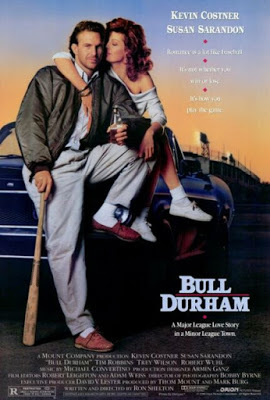
October 20, 2020
Dancing in the Dark: the Irreplaceable Tommy Rall
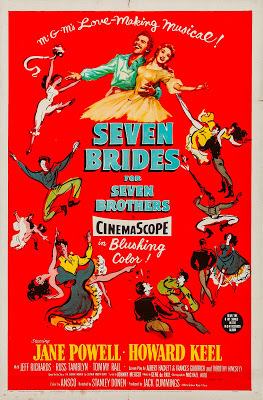
Today, with movie musicals largely a thing of the past and Broadway shuttered for the foreseeable future, I can’t help worrying about the talent we won’t be seeing anytime soon. Who will follow in the footsteps of terpsichorean masters like Tommy Rall, the stage and screen dancer of the 1950s who passed earlier this month at age 90? (Rall breathed his last in Santa Monica, my home town, which boasts several major hospitals and seems to be—alas—a good place to die.)
Until recently I didn’t know Tommy Rall’s name. But when I discovered he was one of the seven Pontipee boys in 1954’s Seven Brides for Seven Brothers, he was (to quote Cole Porter) all right with me. Seven Brides, which had once seemed like good family fun, is less appealing now, given its nod to the mythological rape of the Sabine women in explaining how six rollicking redheaded backwoods Pontipees (faced with a distinct female shortage) manage to find marriage partners by abducting the local ladies and holding them prisoner until winter melted into spring. The MGM production is at pains to keep sex at bay and make clear that these young women really love these guys, despite their wild and crazy ways. Still, in an era when we’re focusing on sexual coercion, the storyline remains a tad disturbing.
The glory of Seven Brides, of course, is its dancing, epitomized by the barn-raising sequence in which the townsmen vie with the Pontipees to show off their masculine charms. All the dancers, as choreographed by Michael Kidd, are marvelously spirited and agile. (They include Russ Tamblyn of West Side Story fame, as well as New York City Ballet star Jacques d’Amboise. A young Julie Newmar, billed as Julie Newmeyer, is the tallest bride-to-be.) But in re-watching this delightful footage, it’s clear that Tommy Rall (as the hot-headed Frank) is the first among equals. He’s the one with the bright red shirt, the tall black boots, and the look of furious intensity. As a stage and screen dancer, Rall could be not only balletic but acrobatic, shedding none of his machismo while moving to music. It didn’t hurt that he was a capable singer too.
Scrolling through the invaluable YouTube, I’ve located clips of Rall in such Fifties musicals as Kiss Me Kate, where he romances Ann Miller’s spritely Bianca and vies with none other than the young Bob Fosse for her hand. (Check out Rall’s comic duet with Miller to Cole Porter’s “Always True to You in My Fashion.”) There’s also a primo competition dance, full of leaps, twirls, and tapping, between Rall and the smaller, slighter Fosse from 1955’s musical version of My Sister Eileen.
Needless to say, Bob Fosse moved on from Hollywood to evolve into a major Broadway choreographer and director, ultimately winning an Oscar for his work on Cabaret and becoming a legend in his own time. Addicted to drink and drugs, he burned out in 1987 at the age of sixty. Rall, who played a quieter role in the entertainment world, lived thirty years longer. Though the Fifties was his great era, he was still flourishing in 1968, showing both his classical poise and his ability to keep a straight face while partnering Barbra Streisand in Funny Girl’s hilariously unorthodox version of Swan Lake.
His talents earned the respect of such great movie dancers as Gene Kelly and Donald O’Connor. And his name meant enough on Broadway that someone named Frederick Brame borrowed it without permission to try to advance his own dance career. Hail and farewell to the real Tommy Rall.
October 16, 2020
John Steinbeck at the Movies

The writer John Steinbeck was a man of many contradictions. He was known as a poet of the Central California coast, but he lived out his later years in New York City. He won the Nobel Prize for Literature, but academic types tended to look down on his body of work. He was loved by many readers for his tender appreciation of the common man, but he also had a strong misanthropic streak. That’s why his most recent biographer, my colleague William Souder, calls his deeply-revealing book Mad at the World: A Life of John Steinbeck.
Despite his celebrity, Steinbeck was not a man who felt comfortable amid the movers and shakers of Hollywood. (This despite the fact that the woman who became his second wife, Gwen Conger, worked on the fringes of showbiz. Their affair began while John was holed up in a place called the Aloha Arms, supposedly learning the movie business.) Steinbeck’s interest in making films was piqued when his rollicking little tale of life among the paisanos of Monterey, Tortilla Flat, sold to Paramount Pictures for $4000. In the 1930s, this was a huge sum, and his initial thought was to bank it for the future and continue to live frugally with his first wife, Carol. But at this point in his career, Steinbeck was starting to become noticed in a big way. His powerful bestselling novella, 1937’s Of Mice and Men, made a big splash on Broadway, and became the source of his first actual screen credit. The 1939 film version, directed by Lewis Milestone and starring Burgess Meredith, Betty Field, and Lon Chaney Jr., was nominated for four Oscars including best picture. Happily, the adapters remained faithful to the book, though an earlier director-producer, Mervyn LeRoy, had tried to persuade Steinbeck that the film would be stronger if Lennie did not in fact kill Curley’s wife, but only got blamed for it. (There’ve been several additional film versions since, including one from 1992, starring John Malkovich and Gary Sinise, who also directed.)
Once Steinbeck’s Dust Bowl masterpiece, The Grapes of Wrath, was published in 1939, Steinbeck’s Hollywood fame was assured. The 1940 film, directed by the great John Ford, starred Henry Fonda as a memorable Tom Joad. Jane Darwell won an Oscar for her heartfelt turn as Ma Joad, and Ford was honored for his direction. Fans of the novel lamented the loss of Steinbeck’s lyrical interstitial chapters but Steinbeck himself was pleased by Ford’s gritty focus on his characters. When viewed today, the film remains moving, but Gregg Toland’s black & white cinematography, effective though it is, can’t truly convey the rural landscape on which Steinbeck’s characters live and work.
When Steinbeck’s final great novel, East of Eden, appeared in 1952, Hollywood was waiting. Elia Kazan was tapped to direct the 1955 version of Steinbeck’s epic family tale. It is best known for launching the career of James Dean, who crackles with on-screen electricity in his rows with his stern father (Raymond Massey) and his passion for his brother’s eager young fiancée (Julie Harris). The film’s widescreen color cinematography gives a glimpse of the land that Steinbeck held so dear, but lacks the power of his rich opening description of his birthplace, which begins as follows: “The Salinas Valley is in Northern California. It is a long narrow swale between two ranges of mountains, and the Salinas River winds and twists up the center until it falls at last into Monterey Bay.”
October 13, 2020
A Farewell to Gene Corman, Roger’s Kid Brother
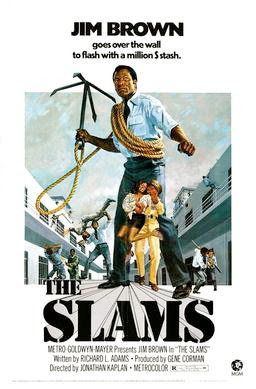 I’ve just learned the sad news that Gene Corman has left us at the age of 93. Both Variety and The Hollywood Reporter published respectful stories detailing Gene’s years as a talent agent and as the producer of such ambitious World War II films as Arthur Hiller’s Tobruk and Sam Fuller’s The Big Red One, In 1982 he won an Emmy for producing a TV movie, A Woman Named Golda, starring Ingrid Bergman as Israeli prime minister Golda Meir. But most of Hollywood, I suspect remembers Gene as Roger Corman’s younger brother. And so, of course, do I.
I’ve just learned the sad news that Gene Corman has left us at the age of 93. Both Variety and The Hollywood Reporter published respectful stories detailing Gene’s years as a talent agent and as the producer of such ambitious World War II films as Arthur Hiller’s Tobruk and Sam Fuller’s The Big Red One, In 1982 he won an Emmy for producing a TV movie, A Woman Named Golda, starring Ingrid Bergman as Israeli prime minister Golda Meir. But most of Hollywood, I suspect remembers Gene as Roger Corman’s younger brother. And so, of course, do I. I first met Gene circa 1973 at Roger’s New World Pictures: he was sharing a corner of Roger’s rather shabby Sunset Strip penthouse suite on behalf of his own small company, Penelope Productions. Here’s what I remember best: Gene’s unforced friendliness to one and all, his thick glasses, and the vivacious blonde wife (Nan) to whom he was married for 65 years. On an ultra-hot day, when our office quarters felt like a steambath, Nan blithely invited Gene’s secretary and assistant to forget about business and come over to their Beverly Hills digs for a swim. (We employees of Roger hardly received a similar invitation from our hard-driving boss)
I once wrote that “what’s most interesting about Gene is the way he diverges from the family code of personal austerity. Everyone who’s known the two Cormans remarks on the contrast in their lifestyles. Roger’s tastes run to contemporary minimalism, and his homes have always reflected this; Gene has lived for years in an venerable Beverly Hills Tudor-style house replete with antiques. Roger prides himself on wearing the same nondescript clothing for decades; Gene owns an array of handsome pullover sweaters. Gene was the family’s first art collector, bucking [their father] William Corman’s fears that paintings and sculpture were an extravagance, and much too risky to be considered a worthwhile investment.”
Frank Moreno, longtime New World head of sales, explained to me in late 1998 the essential distinction between the brothers: “Gene is going to enjoy every minute of life, and Gene’ll spend whatever it takes to do it.” Paul Almond, a later New World business executive, put it this way: “Gene was a total sport. Gene would pick up a tab. Roger never picks up tabs.” There may well be a significant link between Gene’s personal warmth and his liberal attitude toward money, which stand a world apart from Roger’s emotional reticence and tight-fisted approach.
Former Corman folk differ on how well the brothers got along. When they were working together on low-budget drive-in flicks like Beast from Haunted Cave, tempers occasionally flared. But Gene proved his mettle when Roger and company traveled to Southern Missouri, just over the Arkansas border, to shoot The Intruder, a raw account of a mysterious rabble-rouser (a pre-Star Trek William Shatner) who shows up in a Southern town that’s grudgingly complying with a school desegregation order. The subject was a bold one in 1961. Threats of violence abounded, and law enforcement officers were frequently seen snooping around the set, where a number of the minor roles were being filled by locals. Roger, directing a movie about which he cared deeply, was wary of distractions. So Gene, in his role as executive producer, was charged with fast-talking the film company out of possible legal jams. Somehow they survived unscathed.
When I was at New World Pictures, Gene was going through his blaxploitation period. I never had a hankering to see films like Darktown Strutters or The Slams. But I always wished him well.
October 9, 2020
The Great George Remus: Bootleggers Go Hollywood
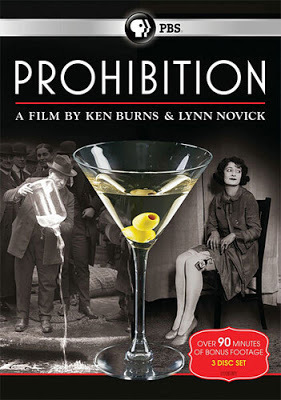
The general public, it seems, didn’t think much of Prohibition. During the years between 1920 and 1933, when the Eighteenth Amendment to the U.S. Constitution made the manufacture, sale, and consumption of most alcoholic beverages illegal throughout the land, many Americans had a strong hankering for a stiff drink. The unintended consequences of Prohibition, which was introduced as a way to improve American social norms, have been chronicled by Ken Burns and Lynn Novick in a lively video documentary that first appeared in 2011. In trademark Burns fashion, the three segments combine historic footage, commentary from experts, major actors (including John Lithgow, Samuel L. Jackson, and Tom Hanks) taking on the voices of essential Prohibition figures, and dramatic narration (by Peter Coyote). Music also plays a key role: both period recordings and an evocative jazz score by Wynton Marsalis. The first episode, A Nation of Drunkards, explains the evolution of the temperance movement in the U.S., with Patricia Clarkson featured as the indomitable Carrie Nation. The second, A Nation of Scofflaws, focuses on the criminal element that thrived in the new “dry” environment. Finally, A Nation of Hypocrites charts the move toward repeal.
Naturally it’s that second episode, with its cast of bootleggers and other gangster types, that proves the most exciting. Even back in the day, while thugs and federal agents were shooting it out in the streets of many American cities, moviegoers flocked to see flicks in which audacious law-breakers occupied the leading roles. First came 1931’s Little Caesar, with Edward G. Robinson as gangland boss Caesar “Rico” Bandello. Such was the film’s popularity that it was quickly followed by James Cagney in The Public Enemy (1931) and then Paul Muni trying on the persona of Al Capone in Scarface (1932). None of these guys could be considered admirable—and the public loved them.
In Burns and Novick’s series, Paul Giamatti lends his voice to the portrayal of millionaire bootlegger George Remus, known as the Bourbon King for his success in transporting Kentucky’s finest to thirsty patrons all over the U.S. I had never heard of Remus before watching this show, but he proved to be unforgettable. Starting as a pharmacist, Remus evolved into an attorney whose skill at getting off clients faced with murder raps was nothing short of remarkable. Once Remus had segued into bootlegging on a grand scale, he found himself rolling in riches. On December 31, 1921, he staged a spectacular -- and of course liquor-fueled -- New Year’s Eve party at his Cincinnati mansion. All the male guests received diamond stickpins as party favors, while women were given keys to new luxury sedans parked outside. But the star attraction was his spectacular marble swimming pool, into which his beautiful second wife Imogene swan-dived at the height of the festivities.
About six years later, Remus’ legal talents again came in handy. Discovering that while he’d been cooped up in prison, Imogene had squandered his hard-earned dough on a lover who was a federal prohibition agent, he gunned her down in cold blood. On trial for his life, he somehow got off scot-free. Bob Batchelor’s The Bourbon King: The Life and Crimes of George Remus, Prohibition’s Evil Genius tells the whole sordid story in much detail. Batchelor, a colleague of mine in the Biographers International Organization, ends his book with some fascinating theories. Remus, he feels, may have been F. Scott Fitzgerald’s model for the enigmatic central character in The Great Gatsby. I’m not wholly convinced, but Remus will always remain for me a Jazz Age figure of exhilarating complexity.

October 6, 2020
Magic Mike and Those Other Boys in the Band
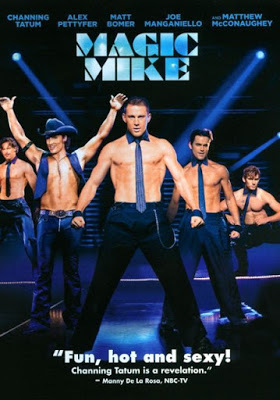
If you’re looking for two films with contrasting outlooks on male sexuality, try watching Magic Mike back to back with the new Netflix version of Mart Crowley’s classic 1968 stage play, The Boys in the Band. Magic Mike, set in modern-day Tampa, features a lurid strip club in which hard-bodied young males rhythmically shed their clothes, to the delight of scores of screaming young women. It’s like a particularly lurid reunion of the Village People: you’ve never seen so many fantasy cops, construction workers, GI’s, and trenchcoat-clad businessmen stripping down to their skivvies (and beyond) to the thumping beat of rock music. Matthew McConaughey presides over this stud farm, and seems to be enjoying every moment he gets to strut his stuff as the motor-mouth club impresario. But at the center of the flimsy story stands Channing Tatum, who apparently once lived this life for real, and has the dance moves (as well as the body) to prove it. He’d really rather be making custom furniture (huh?), but he willingly takes on the obligation of initiating a teen-aged newcomer into this sketchy but somehow glamorous world.
Does he succeed? Do we really care? This film may be easy on the eyes, but it’s hard to feel much connection with its characters and their sometimes pathetic hustles in the name of sex, drugs, and rock ‘n’ roll.
One of the guys in Magic Mike’s chorus line of strippers is hunky Matt Bomer, perhaps best known for looking good in a suit in TV’s White Collar series. I was deeply amused to see Bomer turning up as Donald in The Boys in the Band, a screen adaptation of the acclaimed 2018 Broadway revival starring Jim Parsons (The Big Bang’s nerdy Sheldon, of course) in the central role of Michael. The Boys in the Band owes something to Broadway hits like Who’s Afraid of Virginia Woolf?, in which assorted characters gather for a social event that turns out to be a kind of brutal exorcism. But what made this play stand out in 1968 was the fact that all (or mostly all) of its characters are gay men, presented frankly and affectionately, in an era well before AIDS was to decimate their ranks. One of the partygoers, the flamboyant Emory (Robin de Jesús) seems to conform to a common stereotype (the gay “queen”), but his portrayal – like all the others – is more complex than it first appears. There’s pain here, and humor, and anger, and real grappling to accept the hand that each man has been dealt.
The stakes are ramped up as Michael semi-maliciously introduces a “Get the Guests” party game designed to bring out each player’s deepest hopes and fears. The fact that all the men in this production (also including Zachary Quinto of the Star Trek prequel, Andrew Rannells of The Book of Mormon, and others) are “out” in their own lives doubtless inspires their understanding of the roles they play.
When a Broadway hit is transferred to the screen, it often comes off as stiff and stagey. Director Joe Mantello, one of Broadway’s leading lights since he staged Angels in America in 1993, has only limited film experience. Still, he’s done a masterful job of opening up a play that originally featured a simple living-room set. At the onset, we see the characters heading to Michael’s New York digs from their various homes; later we watch them scattering. Michael’s cushy terrace apartment also allows for some outdoor scenes, and a rain shower punctuates some of the drama. It’s talky, yes, but this talk is well worth hearing.
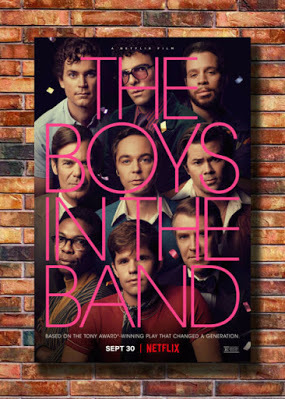
October 2, 2020
Solving the Mystery of Sherlock Holmes’ Little Sister
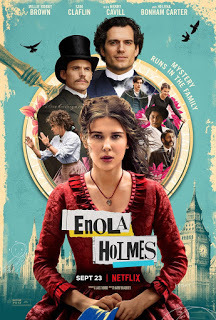
Until recently, all I knew of Millie Bobby Brown was her name. It’s an odd name, putting me in mind of someone living in a charming old farmhouse a few centuries back. Maybe, given her critical and popular success as a psychokinetic young girl on the series Stranger Things, it would be apt to think of that farmhouse as haunted.
Millie Bobby Brown is sixteen years old. But unlike most sixteen-year-olds, she has just produced as well as starred in a new movie I’ve found genuinely enchanting. It’s Enola Holmes, based on a recent series of young-adult mysteries by Nancy Springer, who invented as her leading character a clever young sister of Sherlock and Mycroft Holmes, one who has her own gift for sleuthing her way through Victorian England. Frankly, I’d never heard of the series, but it clearly follows in the footsteps of the young-woman detective sagas of my youth. (There was the unstoppable Nancy Drew, of course, but my special favorite was a red-headed journalist named Beverly Gray who traveled the world solving mysteries while also landing scoops for her newspaper. No, I wasn’t named after her; my mother was terribly surprised to come upon a book titled Beverly Gray’s Romance while I was still in diapers. But I digress.)
Enola Holmes, it seems, has been creatively raised in the English countryside by a strong but mysterious mother (Helena Bonham-Carter, no less) who likes to remind her that her first name, when read backward, spells “Alone” This seems pertinent when that mother suddenly disappears, leaving her clever, headstrong child to fend for herself. When her celebrated older brothers turn up to figure out how to solve the problem of Enola, they aren’t much help. The stuffy Mycroft’s goal is to send her off to a posh but sinister school for young ladies; Sherlock (played by the hunky Henry Cavill without any of the familiar Holmesian paraphernalia) seems more sympathetic to her situation, but is unwilling to give her the autonomy she craves.
Eventually, she manages to get herself to London, meanwhile befriending a youthful aristocrat with problems of his own. As she searches for her lost mother and tries to keep the young Viscount Tewkesbury out of harm’s way, she is able to put to use various aspects of her singular education, including a familiarity with codebreaking, chess, and jiujitsu. This being a story pointed toward today’s young women, there’s no surprise that it contains a strong feminist point of view. I must say I rather enjoyed seeing Tewkesbury (who’s amiable and good-looking but not overly brave) repeatedly cower while Enola takes care of business.
This film would not have succeeded so well without first-rate production values. There’s a lively score by David Pemberton and some charming visuals (paper cut-outs and such) used to bridge scenes and quickly provide information. But Enola Holmes is truly in the hands of Brown, with whom it’s easy indeed to fall in love. The script calls for her to speak, on many occasions, directly to the viewer, and her combination of girlish gusto and Sherlockian smarts proves irresistible. She also gets to wear disguises, transforming herself into everything from an elegant young sophisticate to a ragamuffin boy of the streets. She seems, all in all, to be having a wonderful time, which is why we can presuppose that there’s another Enola Holmes mystery waiting in the wings. The series was apparently brought to Brown by her older sister Paige, who shares a producer-credit with the young star. Hurrah for them both! It’s nice to see the future of cinema in good hands.
September 29, 2020
Home for the Holidays: the Poignant Lessons of “The Long Way Home”
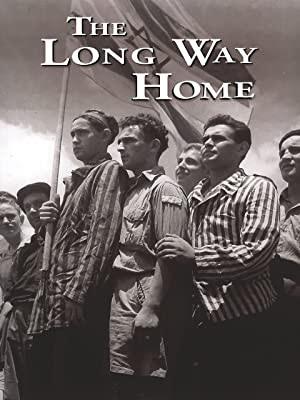
The passing of Ruth Bader Ginsburg just before the start of Rosh Hashanah has introduced many of us to the Jewish High Holy Day period, which begins with a New Year celebration and culminates 10 days later with Yom Kippur, the solemn Day of Atonement. This designated period of self-scrutiny has encouraged me to be introspective too. In a contemplative frame of mind, I watched The Long Way Home, a documentary that won a 1998 Oscar for its unsparing look at what happened to European Jewish refugees after their liberation from Nazi death camps in 1945. The footage, movingly narrated by Morgan Freeman, is a reminder of the power of documentaries to unearth aspects of reality we’d prefer to keep hidden. Moriah Films, the production arm of the Simon Wiesenthal Center (which is the sponsor, as well, of L.A.’s Museum of Tolerance) is adept at using documentaries to drive home lessons from the past that impinge on our lives today.
Appropriately, the clip below from The Long Way Home contains archival footage of an event that’s both hopeful and painfully sad: of Holocaust survivors crowded together on Yom Kippur day at the Feldafing Displaced Persons Camp in Germany, fervently chanting memorial prayers for the loved ones they’ve lost at the hands of Nazi overlords. It’s September 1945 and they’re alive, though barely: in many cases their entire families have been wiped off the face of the earth.
What makes the moment disturbing rather than triumphant is the fact that this D.P. camp—like others scattered across Europe—is being run like a military prison. There’s barbed wire and cramped barracks: harsh discipline, too, for those who don’t follow the rules. As someone says, “the camp is filthy beyond words, sanitation is virtually unknown. With few exceptions the people of the camps themselves are demoralized beyond the hope of rehabilitation.” Over a shot of a group of men sprawled in a heap, staring off into space, a camp inhabitant chimes in: “We are living like a litter of puppies.” A visiting U.S. official named Harrison sends home a damning report: “As matters now stand, we appear to be treating the Jews as the Nazis treated them, except that we do not exterminate them.” He fears this is a lesson that the German people will be happy to take to heart: that Jews are indeed not worthy of being considered human beings.
President Truman appealed to British prime minister Clement Attlee to make the humanitarian gesture of admitting a large number of displaced Jews to Palestine, but his request was flatly turned down. Soon after the heart-wrenching Yom Kippur service at Feldafing Camp, General Eisenhower himself came to visit, along with General George Patton. Eisenhower too was dismayed by the camp’s squalor, and demanded changes. Patton thereby removed military guards, but considered this a major mistake. As he noted in his diary, “If the Jews were not kept under guard they would not stay in the camps. They’d spread over the country like locusts . . . [Sympathetic U.S. official] Harrison and his ilk believe the D.P. is a human being, which he is not. This applies particularly to the Jews, who are lower than animals.”
Chilling words, which help explain a widespread way of thinking that allowed the Holocaust to occur in the first place. To his everlasting credit, Eisenhower removed Patton (whose blunt heroics we well know through the 1970 film starring George C. Scott) from having a say over the fate of displaced Jews. Still, the documentary shows how their tragedy continued even once the war was over.
September 25, 2020
Lighting Up the Tube with “Mad Men”
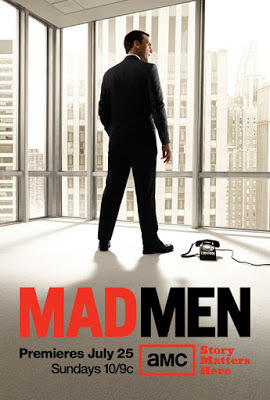
It’s a good thing cigarette smoke can’t emerge from television screens. Otherwise, viewers like me might be struggling now with lung cancer. When I was a kid (and among the first generation of regular TV watchers), I saw countless characters—parents, doctors, authority figures— lighting up. And, of course, I was bombarded with commercials sending the message that “You’ve got a lot to like with a Marlboro” and that “Winstons Taste Good Like a (clap clap) Cigarette Should.” Growing up in a family of militant non-smokers, I never succumbed to the lure of nicotine. But watching the full run of Mad Men has reminded me how heavily smoking has figured in the advertising world, especially in the Sixties, the era portrayed so vividly in the series’ seven seasons.
In Mad Men, both the characters who work in advertising and their spouses at home are constantly sucking on cigarettes. Of course, genuine tobacco products weren’t actually used on-camera, but I recall hearing that the producers, in organizing casting sessions, were screening out actors who had never smoked, because they wanted to populate their cast with those who viscerally understood the lure of smoking . . . and the desperate need to reach for a cigarette in moments of agitation. Given how much happened in the course of the series—the times of tension and despair as well as the rowdy celebrations—naturally the air kept turning blue with smoke.
Of course there’s the fact that the show is set in an advertising agency, kept afloat for many years by its contract with Lucky Strike. When Sterling Cooper is unexpectedly cut loose from this lucrative account, Don Draper shrewdly makes lemonade out of lemons by circulating a large ad detailing the health risks of smoking, with Sterling Cooper congratulating itself for saying goodbye to the whole nasty business. Alas, this strategy backfires when other big tobacco firms begin to back away from Sterling Cooper. Soon the ad men are groveling once again for tobacco accounts –and smoking in the office goes on unchecked.
In a way, Don’s whole troubled existence relates to smoking. We learn via a complicated flashback that Don’s discarded match on a Korean War battlefield is what accidentally dooms his commanding officer, a failing he’ll never entirely live down. And at the show’s end his beautiful but troubled ex-wife Betty is dying, much too young, from lung cancer. The daughter she’ll leave behind, a privileged but restless teenager, is by this point an experienced smoker too. Here’s hoping her mother’s sad example will scare Sally into quitting before it’s too late.
Of all the characters on Mad Men, the one with whom the audience can best identify is Peggy Olson (Elisabeth Moss), who is first seen as a ponytailed “everygirl” secretary, then slowly rises toward the coveted role of creative director with the help of brains, talent, and a determination to work harder than anyone else. Peggy, who initially lives at home with her stern Catholic mother, doesn’t start out as a smoker. But she desperately wants to fit in, and to prove herself one of the guys. Pretty soon she’s being made the point-person for a “lady’s cigarette” campaign. At the tail-end of the final season, when Sterling Cooper personnel are being swallowed up by a much bigger agency and she feels her authority threatened, Peggy nervously stays away from the new digs. Then, at last, she rallies. Entering McCann Erickson , she swaggers down the hall like the Terminator, with dark shades and a determined look on her face. And yes, a cigarette dangling from her lips.
Beverly in Movieland
- Beverly Gray's profile
- 10 followers



